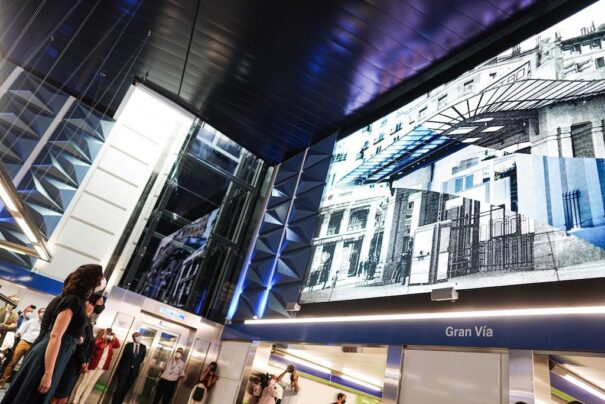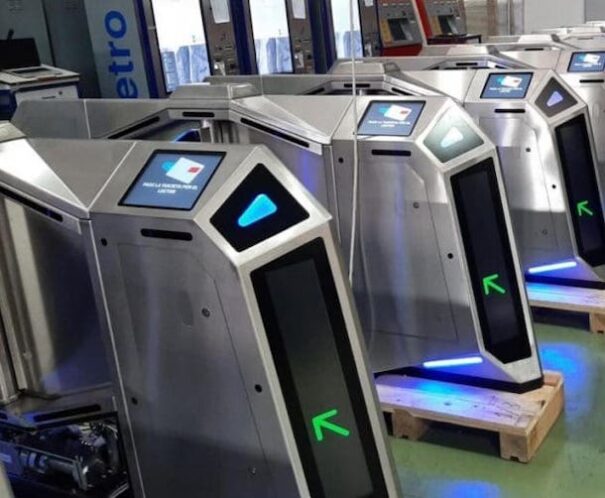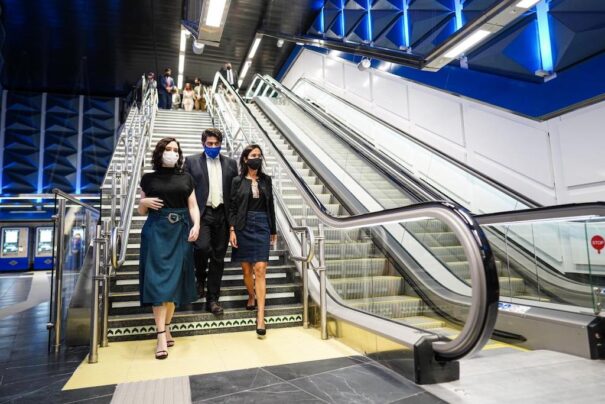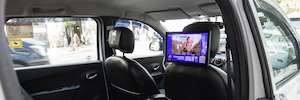Metro de Madrid inaugurates the station 4.0 of Gran Vía with Deneva DS technology
Calificada como la estación 4.0 of Metro de Madrid por su tecnología y accesibilidad, Gran Vía ha contado con la tecnología Deneva Digital Signage of Icon Multimedia para informar a los usuarios en sus grandes pantallas digitales.
El nuevo eje de comunicaciones que une la recién transformada estación Gran Vía of Metro de Madrid (Líneas 1 and 5) y Cercanías-Renfe inició ayer de nuevo su actividad tras la inauguración por parte de la presidenta de la Comunidad de Madrid, Isabel Díaz Ayuso, acompañada por autoridades del Gobierno regional, infraestructuras y de Adif.
Tras una inversión de 10,7 millones de euros para su transformación, Gran Vía inaugura también el concepto de ‘estación 4.0‘, una estación pionera de la red del suburbano en poner la tecnología y la accesibilidad al servicio de sus usuarios. “Va a ser la primera estación 4.0 de España y es, therefore, in addition, una de las estaciones pioneras en Europa”, ha señalado Ayuso.
Con unas previsiones diarias de tránsito de 66.000 viajeros gracias a la conexión con Cercanías Renfe, Gran Vía es una de las estaciones más utilizadas de Metro de Madrid, por la que pasaban hasta antes de su reforma unos 16 million travellers a year.
La estación cuenta con distintos niveles de paso. Como ha explicado Díaz Ayuso, el primero dispone de un vestíbulo mucho más amplio que sustituye al anterior, incrementando su superficie útil de 900 to 2.000 m2.
El segundo nivel intermedio aloja un pequeño museo con los restos arqueológicos aparecidos durante las obras de excavación y ampliación de la estación. Last, un tercer nivel conecta con la Línea 5 y con una galería de acceso que une la estación de Metro de Gran Vía con la de Renfe Cercanías Sol. In this way, la seguridad y sus instalaciones mejoran significativamente al disponer de dos entradas y salidas.
Tecnología al servicio del viajero
El usuario dispondrá de catorce nuevas máquinas de venta de títulos de transporte, cuya tecnología 4.0 ofrece un avanzado diseño y prestaciones, al contar con grandes pantallas de visualización, pago de la operación sin contacto, mejoras en la interfaz y la posibilidad de acceder al servicio de atención al cliente a través de videollamada.
In addition, se han instalado diecisiete equipos de control de validación (tornos de entrada), seis de los cuales están destinados a usuarios con movilidad reducida, distribuidos en dos vestíbulos.
Las pantallas digitales de visualización instaladas integran la tecnología Deneva Digital Signage, desarrollada por la empresa española Icon Multimedia, para informar a los usuarios en todo momento.
Estos modelos ocupan menos espacio, disponen de una interfaz más intuitiva y una pantalla que informa al usuario sobre la validación del título de transporte empleando gráficos y texto, además de iluminación Led en las puertas, en el lector sin contacto y en el suelo para informar al viajero sobre el resultado de la validación.
Accesibilidad y seguridad
La estación de Gran Vía también es plenamente accesible, con cuatro nuevos ascensores y trece escaleras mecánicas, conectadas y monitorizadas con el puesto de control de Metro de Madrid.
Los usuarios con movilidad reducida pueden acceder a dispositivos como sistemas de apertura fácil en puertas, tiras antideslizantes en escaleras fijas, etiquetas braille en los pasamanos, señalización de elementos de accesibilidad, pasamanos a doble altura, interfonos de comunicación adaptados, así como pavimentos de tacto visual cerámico para facilitar sus desplazamientos.
The same, la estación de Gran Vía incorpora nuevos sistemas de detención y extinción de incendios para mejorar la seguridad.
En cuanto al diseño se refiere, el espacio combina una estética moderna con elementos del pasado, como la incorporación del mural de cerámica instalado en el vestíbulo del el templete original de acceso a la estación diseñado por Antonio Palacios, una obra del artista Miguel Durán-Loriga, de 2,12×6,48 metre, y en superficie se ha instalado una réplica del mismo.
Este proyecto ha sido cofinanciado por la Comunidad de Madrid y la Unión Europea a través del Programa Operativo Fondo Europeo de Desarrollo Regional FEDER 2014‐2020.
You liked this article?
Subscribe to our Feed And you won't miss a thing.








